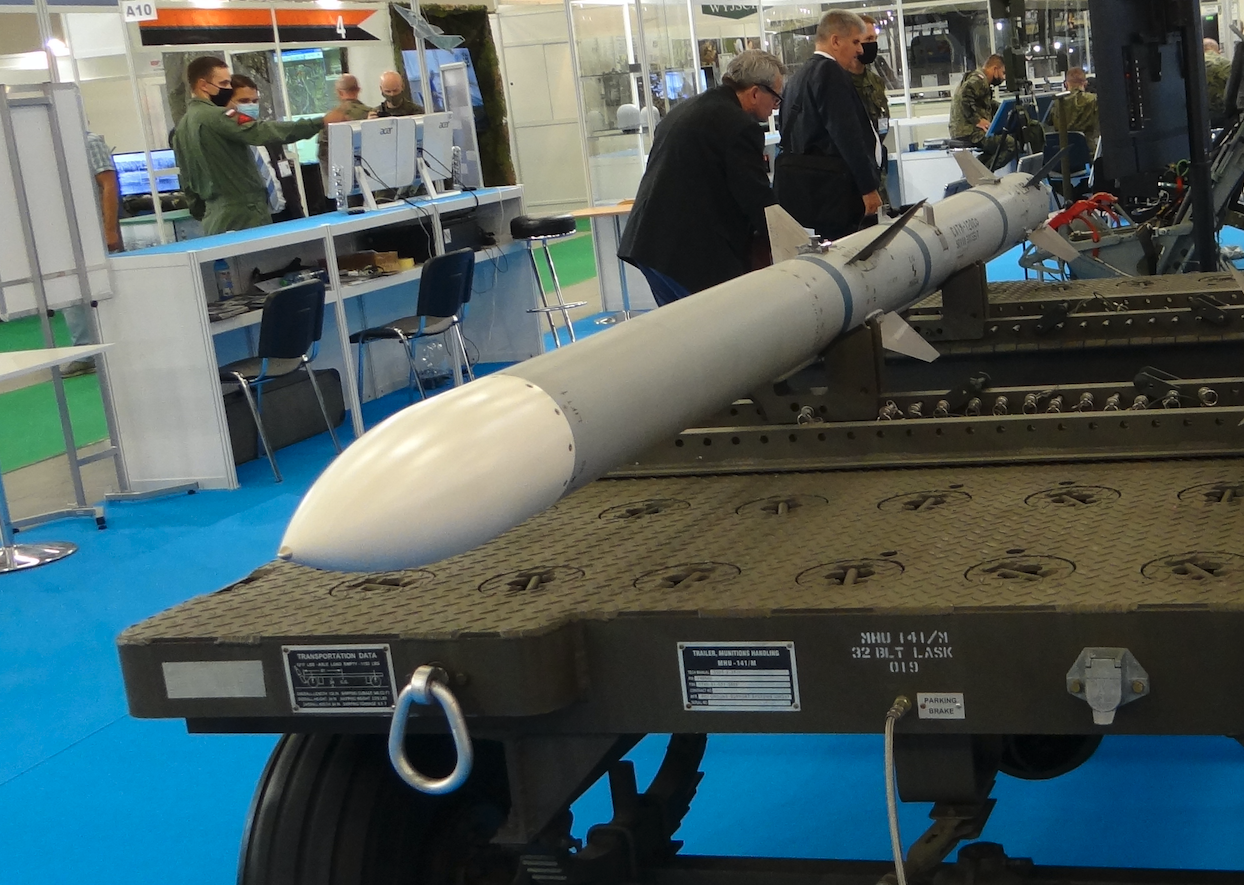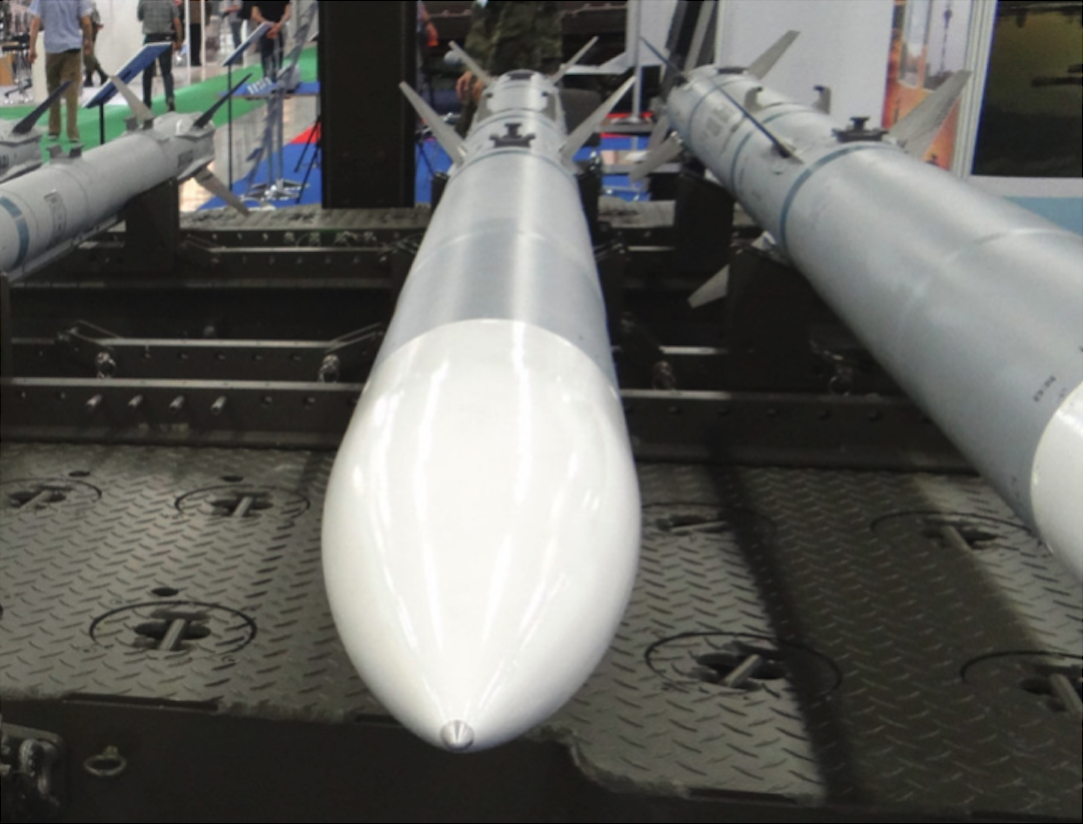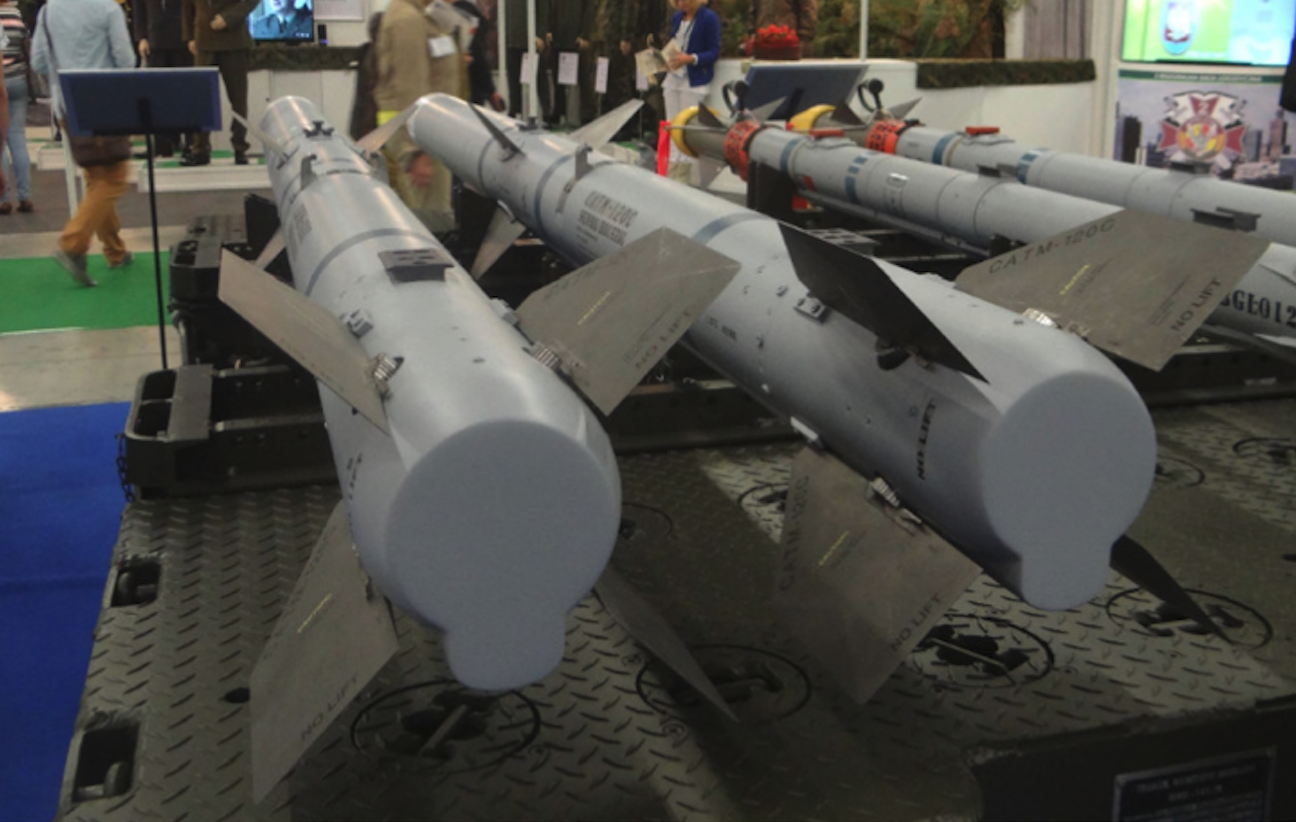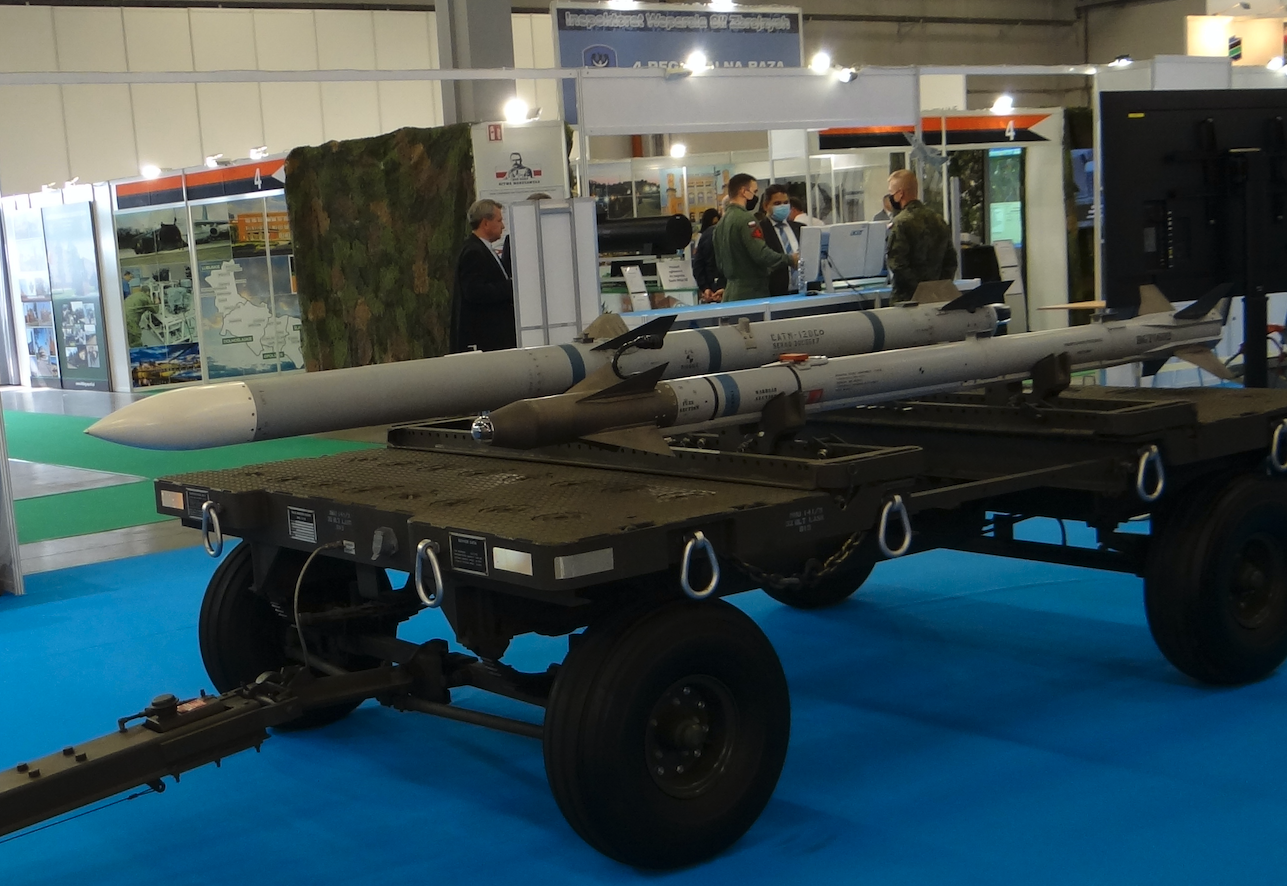Kraków 2022-10-25
Hughes – Raytheon AIM-120 AMRAAM.
AIM-120 AMRAAM (Advanced Medium-Range Air-to-Air Missile) is an American air-to-air guided missile. The missile is a medium-range missile. It has an active radar guidance system, a corrected INS inertial navigation system.
Description of the photo: In the foreground the CATM 9X-2 training missile.
The history of the AIM-120 AMRAAM missile.
For many years, the second, next to the AIM-9 Sidewinder missile, was the AIM-7 Sparrow missile. It belonged to the medium-range missiles with radar guidance, commonly used in NATO countries. Unfortunately, it was not possible to develop and produce a fully satisfactory means of combat. The probability of achieving the target by the missile was only 60-80%. Breakdowns were frequent and the time consumed to service increased.
In the mid-70s of the twentieth century, the USA offered to cooperate with other countries of the NATO pact to jointly develop a new guided radar missile, with a range of 5,000 – 70,000 m. Thanks to international cooperation, the cost of development would be lower, and large-scale production would allow for a favorable price calculation for one bullet. Soon the program was expanded to include a short-range thermally guided missile. In the next agreement, the US was to develop the AMRAAM medium-range missile, and Western Europe was to develop the short-range ASRAAM missile. But Western Europe has developed two missiles. AIM-132 ASRAAM short range and MBDA Meteor medium range. The US response to this situation was to withdraw from the treaty and continue to work independently on AMRAAM and the development of the AIM-9 Sidewinder.
USAF announced a competition for AMRAAM in which 5 companies participated. In 1979, the Raytheon and Hughes designs were selected. After extensive testing in December 1981, Hughes was announced the winner. At that time, it was predicted that the missile would enter service in 1986. Serial production was estimated at 120,000 units, including 20,000 for the USAF. The missile weight was to be 148 kg, the warhead weight was 23 kg. The company received a contract to build a life-size prototype and further tests. In 1987, a contract was signed to build a trial series with both companies; Raytheon and Hughes. The missile was designated AIM-120 A, but interestingly, the name AMRAAM was also retained. About 200 were built, entered service in 1991, and were operational in 1993.
The AIM-120 AMRAAM was developed in the convention of its predecessor, the AIM-7. The AIM-120 missile is a guided missile capable of dealing with the target out of sight (BVR – Beyond Visual Range). It can be used in all weather conditions, day and night. AIM-120 AMRAAM has an extensive guidance system, which is two-stage: inertial and active-radar. It is actively conducted by a built-in radar, and if its range is too small, the first guidance is performed by an inertial navigation system. At considerable distances, the missile supports a radar system mounted on board the aircraft (carrier or flying command post). Before firing, the inertial system retrieves the necessary target data. The inertia system delivers the missile to a distance sufficient for the missile to autonomously take over the target. At shorter distances, the projectile belongs to the fire and forget class, i.e. immediately after the shot, the pilot can move to another target.
The AIM-120 AMRAAM is lighter, smaller, faster and more agile compared to its predecessor AIM-7 Sparrow. It is less dependent on the host and, in addition, can cooperate with the flying command post, from which it receives some of the target data. It is less sensitive to reflected radar echoes from the ground. It is more reliable and requires less maintenance time. At considerable distances, the correction of the flight trajectory takes place at certain intervals.
Successively modernized versions were developed: AIM-120 A, AIM-120 B, AIM-120 C, and each of them appeared in several variants. Since 1999, the AIM-120 C version has been produced. Work on new versions is still carried out. The missile is anti-aircraft and anti-ballistic, meaning it can engage long-range missiles (strategic, intercontinental and global) before they reach their target. On the basis of the AIM-120 AMRAAM, ground (surface) anti-aircraft missile systems were developed. The shells are still manufactured by Raytheon and Hughes.
Poland purchased the AIM-120 C-5 AMRAAM versions for its F-16 Jastrząb aircraft Basic data of AIM-120 C-5 AMRAAM: dimensions length 3.66 (3.70) m, diameter 178 mm, wingspan 526 mm, weight 152 kg , solid fuel rocket engine, max speed Ma-4 (4 896 km / h), range 105-110 km, high-explosive-demolition warhead weighing 18 kg. The missile uses the LAU-129 E / A launcher. 200 rounds were ordered in the first delivery.
Written by Karol Placha Hetman




